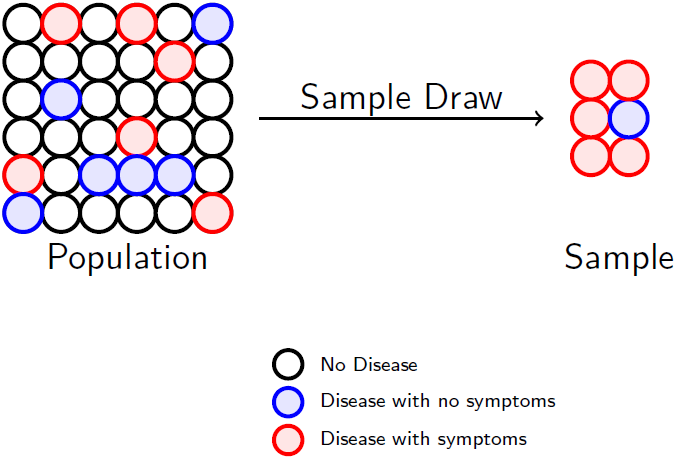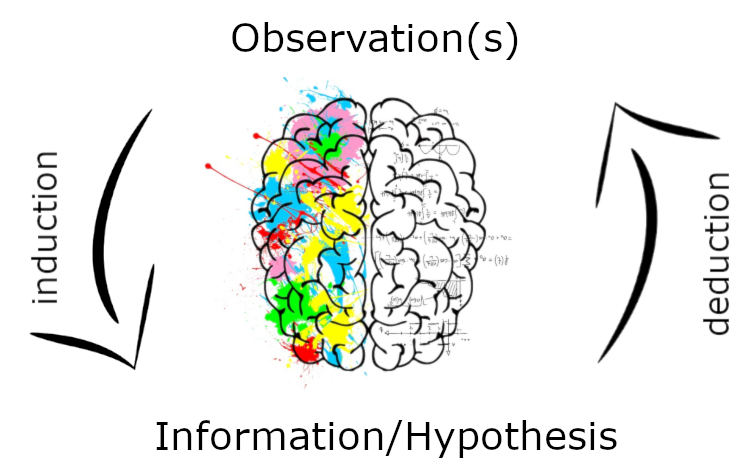Inductive Reasoning and Diversity Principle/Effect
The strength of inductive reasoning is conditional on many parameters – one of which is the diversity of the observations. We will talk about the diversity principle/effect: More diverse evidence is stronger (in general) than less diverse evidence.
Children tend to generalize substantially broadly. If a child has got a new hat, she might think, for instance, that any animal could have a hat. She would not be surprised to see an animal wearing a hat, unlike us. In fact, when we say that “animals do not wear hot,” it would be surprising for her. Then she starts questioning who does wear a hat, why animals do not wear a hat, and so on.

We may say that the quality of inductive reasoning increases as the child sees other animals are not wearing hats. Assume that she did not observe any animals yet. She keeps seeing other people wearing hats. It will be even more difficult for her to give up her inference that “animals should wear hats too” as she keeps seeing other people. The diversity of the observations here helps more accurate reasoning. This “childish” example applies to adults. Let’s discuss more serious examples.
Examples
This principle is so implicit in human reasoning it even applies in modern law: two independent witnesses to a crime scene seem to be stronger evidence than two witnesses who share a similar perspective (e.g., a husband and a wife). We also implicitly reason in this way. Consider the following example from Feeney & Heit (2007, Chapter 1):
Observation: Hippos require Vitamin K for the liver to function.
Observation: Rhinos require Vitamin K for the liver to function.
Inference: All mammals require Vitamin K for the liver to function.
Using two observations we make an induction and claim that all mammals require Vitamin K for the liver to function. Assume, instead, we have the following evidence:
Observation: Hippos require Vitamin K for the liver to function.
Observation: Hamsters require Vitamin K for the liver to function.
Inference: All mammals require Vitamin K for the liver to function.
Most people would think that the latter is stronger. Although there is a concrete way to compare two pieces of evidence, our intuition tells us the diverse evidence is stronger. Our intuition is not wrong – in general. It is very reasonable!
Nonprobability Samples and Selection Bias
I will explain the diversity principle with my own research field. I am studying on selection bias problem with the nonprobability samples. Understanding two terms will help us to understand why the diversity principle is important.
Nonprobability sample is a sample that is drawn from a population with certain selection mechanisms. For example, the whole world has been struggling with the Covid-19 pandemic since 2020. There had been many discussions regarding the mortality rate of the disease. However, it is difficult to estimate this number because there a selection bias that must be controlled. In covid-19 cases, we record people who are more likely to show symptoms of the disease. Otherwise, people are less likely to get tested because they do not even know they had the disease. Therefore, with this sample, when you estimate the mortality, you overestimate it. For instance, your sample will be older than the population. This sample is called a nonprobability sample because of such selection bias.

In order to estimate the mortality rate accurately, there are many methods, which we will not talk about. But it is clear that our sample must have enough diversity so that we can estimate the mortality rate. For instance, there should be more people with no symptoms.
It substantially relates to our daily life. We are surrounded by people who have similar characteristics, incomes, and ethnicity. Well, statistically speaking… Therefore, our understanding of the world, our opinions will have such selection biases as in Covid-19 data. For instance, if you would like to understand public opinion on a matter, you must diversify your observations. You can read newspapers with different ideologies, talk to people with different backgrounds, etc. I am sure you are familiar with this sort of problem, and you often try to do what I am saying here. This is our implicit way of reasoning that we are doing it subconsciously most of the time so that we can have a better understanding of our surroundings.
Further Reading
I substantially utilized Chapter 1 of “Inductive Reasoning: Experimental, Developmental, and Computational Approaches” for this article. I recommend it for further reading if you are interested. The authors emphasize that inductive reasoning is overlooked in academic literature. However, I think it is overlooked in daily life despite its prevalence. I am planning to write a review article if I can finish reading it.
Feeney, A. E., & Heit, E. E. (2007). Inductive reasoning: Experimental, developmental, and computational approaches. In Fifth International Conference on Thinking, Jul, 2004, University of Leuven, Belgium; Many of the chapter authors for this book talked at the aforementioned symposium.. Cambridge University Press.







2 Comments